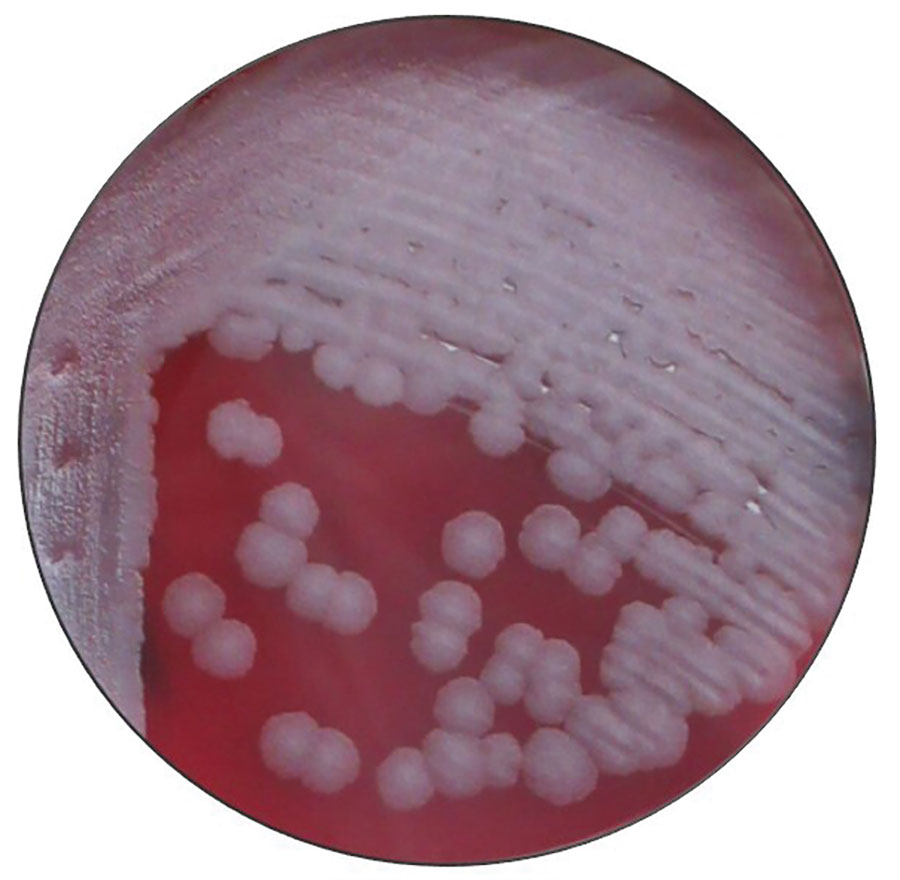Volume 26, Number 12—December 2020
Synopsis
Control and Prevention of Anthrax, Texas, USA, 2019
Figure 3

Figure 3. Bacillus anthracis 24-hour growth on sheep blood agar from a swab of a cutaneous anthrax lesion from a patient in Texas, USA, 2019. Typical ground glass colony morphology and lack of hemolysis are shown.
Page created: November 12, 2020
Page updated: November 19, 2020
Page reviewed: November 19, 2020
The conclusions, findings, and opinions expressed by authors contributing to this journal do not necessarily reflect the official position of the U.S. Department of Health and Human Services, the Public Health Service, the Centers for Disease Control and Prevention, or the authors' affiliated institutions. Use of trade names is for identification only and does not imply endorsement by any of the groups named above.